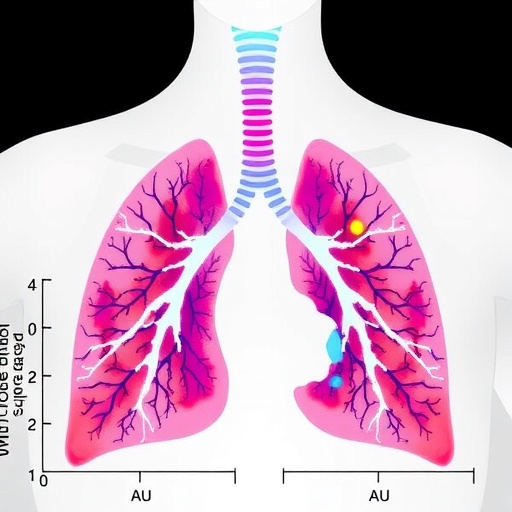Tumors arising from the meninges—soft tissue membranes enveloping the brain and spinal cord—are far more prevalent in older women than previous medical literature has suggested. This revelation emerges from an extensive population-based study conducted by researchers at the University of Gothenburg, highlighting that nearly 2.7 percent of 70-year-old women harbor these tumors, known as meningiomas. These findings illuminate a critical aspect of neuroscience and geriatric medicine, reinforcing the necessity for nuanced diagnosis and management strategies in clinical settings.
Meningiomas develop on the meninges, the protective layers surrounding the brain, but notably outside the brain tissue itself. Unlike many brain tumors that originate within neuronal tissue, meningiomas generally exhibit distinct growth patterns and biological behaviors, often characterized by slow proliferation and benign histological features. However, the increased frequency in older female populations underscores a complex interplay of aging, sex-specific biology, and possibly hormonal influences, which the research seeks to unravel further.
In this Swedish cohort study, investigators randomly selected 792 individuals aged 70, performing comprehensive brain MRI screenings to detect the presence of meningiomas. The overall prevalence across this elderly population was 1.8 percent, but a marked gender disparity emerged: 2.7 percent of women were diagnosed with meningiomas, contrasting significantly with men’s incidence rate that was approximately one-fifth that figure. Such data illustrate not only an underappreciated epidemiological trend but raise pivotal questions about the pathophysiological mechanisms driving these tumors.
.adsslot_mW309lAUCB{ width:728px !important; height:90px !important; }
@media (max-width:1199px) { .adsslot_mW309lAUCB{ width:468px !important; height:60px !important; } }
@media (max-width:767px) { .adsslot_mW309lAUCB{ width:320px !important; height:50px !important; } }
ADVERTISEMENT
The study was spearheaded by Erik Thurin, a neuroscientist associated with both the University of Gothenburg and Sahlgrenska University Hospital, whose prior clinical experience has frequently encountered incidental meningiomas. These tumors are often discovered serendipitously during MRI scans conducted for unrelated neurologic complaints in the elderly, such as dizziness or headaches. Thurin emphasizes that while meningiomas are predominantly benign and indolent, their incidental detection can provoke diagnostic and therapeutic dilemmas, with potential risks of overtreatment.
From a neuropathological standpoint, meningiomas typically exhibit slow growth rates, are encapsulated, and manifest a benign cellular architecture. Malignant meningiomas—although documented—constitute a minority and are markedly rare in this age group. Consequently, incidental findings warrant a balance between vigilance and restraint; aggressive intervention is generally unwarranted unless radiological or clinical evidence indicates rapid tumor expansion or symptomatic mass effect.
The pronounced predilection of meningiomas toward older females has long intrigued neuroscientists. This phenomenon may be influenced by sex hormones, especially progesterone and estrogen receptors expressed in meningioma cells, potentially modulating tumor growth dynamics. The University of Gothenburg’s findings provide robust population-level corroboration for this theory, adding weight to hormonal milieu hypotheses in tumor genesis and progression.
The foundational data arose from the H70 project, an expansive epidemiological study engaging randomly selected 70-year-olds for multifaceted health assessments, including neuroimaging. This methodologically rigorous design enhances the credibility of prevalence figures and affords valuable insights into the silent burden of meningiomas within a general, non-clinical elderly population—a demographic often underrepresented in tumor surveillance research.
Clinically, these insights bear significant implications for diagnostic workflows. Physicians frequently confront meningiomas as incidentalomas on MRI scans performed for other neurological issues in geriatric patients. It is crucial to distinguish symptoms arising directly from the tumor versus unrelated age-associated conditions, thereby avoiding unnecessary surgical interventions that can carry substantial morbidity in this vulnerable group.
Surgical resection remains the definitive treatment for meningiomas that cause symptoms or demonstrate growth. Yet, many patients with asymptomatic or minimally symptomatic tumors can be safely managed with vigilant monitoring through serial MRI studies. This conservative approach prevents iatrogenic complications and preserves quality of life, aligning with principles of precision medicine tailored to individual risk profiles and tumor biology.
Erik Thurin cautions that misattributing neurological symptoms such as dizziness to an incidental meningioma can lead to unnecessary surgical procedures, which may impart avoidable adverse effects. Comprehensive clinical evaluation and interdisciplinary consultations are therefore indispensable to guide optimal management pathways, ensuring that interventions are justified and evidence-based.
The study accentuates broader challenges in contemporary neuro-oncology concerning incidental findings. As imaging technology and scanning rates rise globally, the medical community increasingly encounters incidental brain lesions. Developing standardized guidelines for assessment and follow-up in elderly populations will be pivotal to harmonize patient care, reduce anxiety, and allocate healthcare resources wisely.
Ultimately, this research champions a balanced, scientifically grounded approach to meningiomas in aging individuals. By integrating epidemiological data, hormonal biology insights, and clinical prudence, healthcare providers can refine strategies that maximize benefits while minimizing harm. This nuanced understanding promises to shift paradigms in managing neuro-oncological diseases within the growing elderly demographic worldwide.
Subject of Research: People
Article Title: Prevalence and symptoms of incidental meningiomas: a population-based study
News Publication Date: 3-Apr-2025
Web References: http://dx.doi.org/10.1007/s00701-025-06506-7
Image Credits: Photo: Margareta G. Kubista
Keywords: meningioma, incidental tumor, elderly women, brain tumors, meningeal tumors, MRI, neuro-oncology, hormonal influence, population study, elderly health, tumor prevalence, neuroimaging
Tags: aging and brain healthbenign brain tumor characteristicsclinical diagnosis of meningiomasgender disparity in tumorsgeriatric medicine researchhormonal influences on tumorsmeningiomas in older womenMRI screenings for tumorsneuroscience advancementspopulation-based study findingsprevalence of brain tumorsundiagnosed brain tumors





